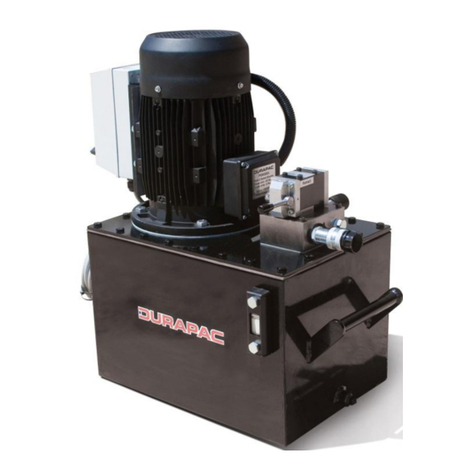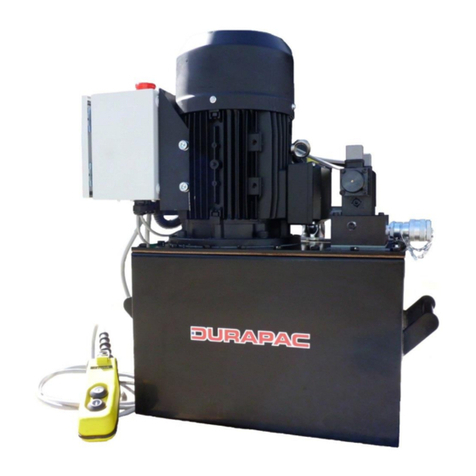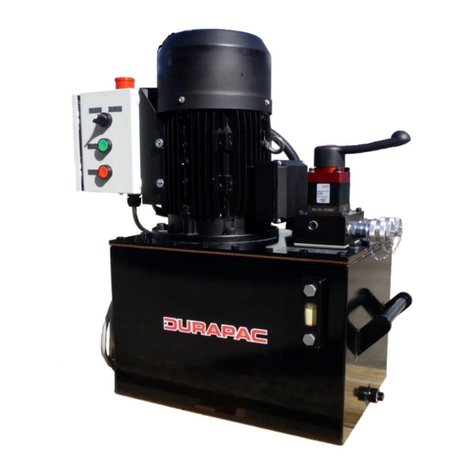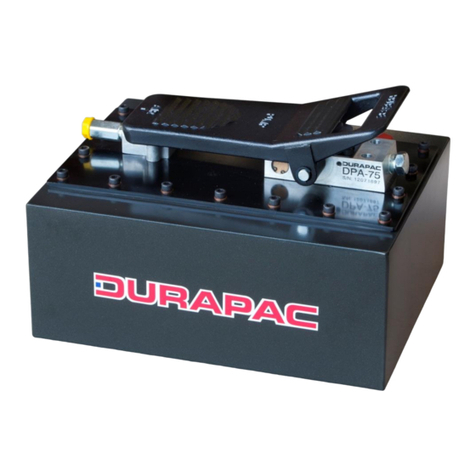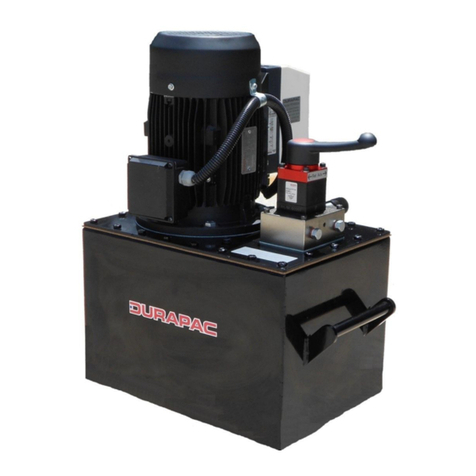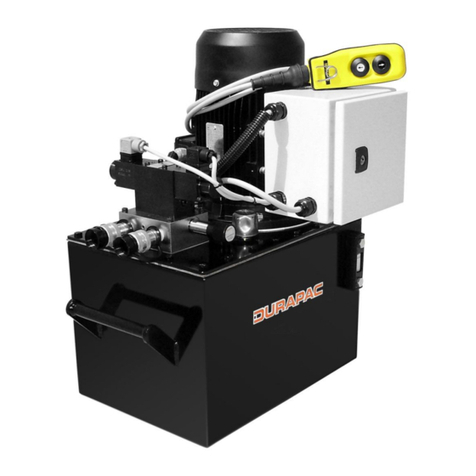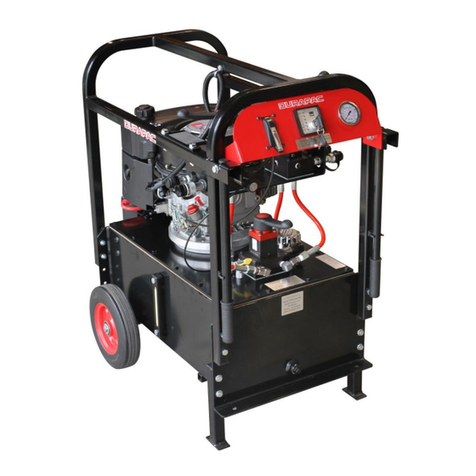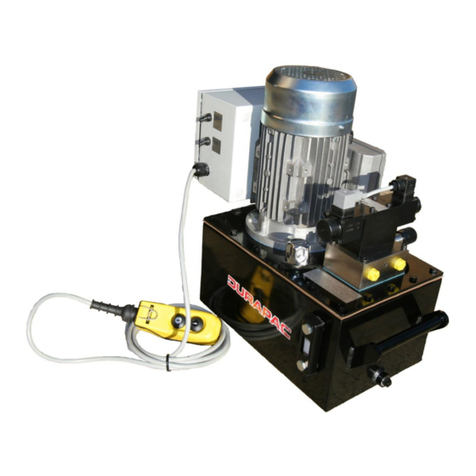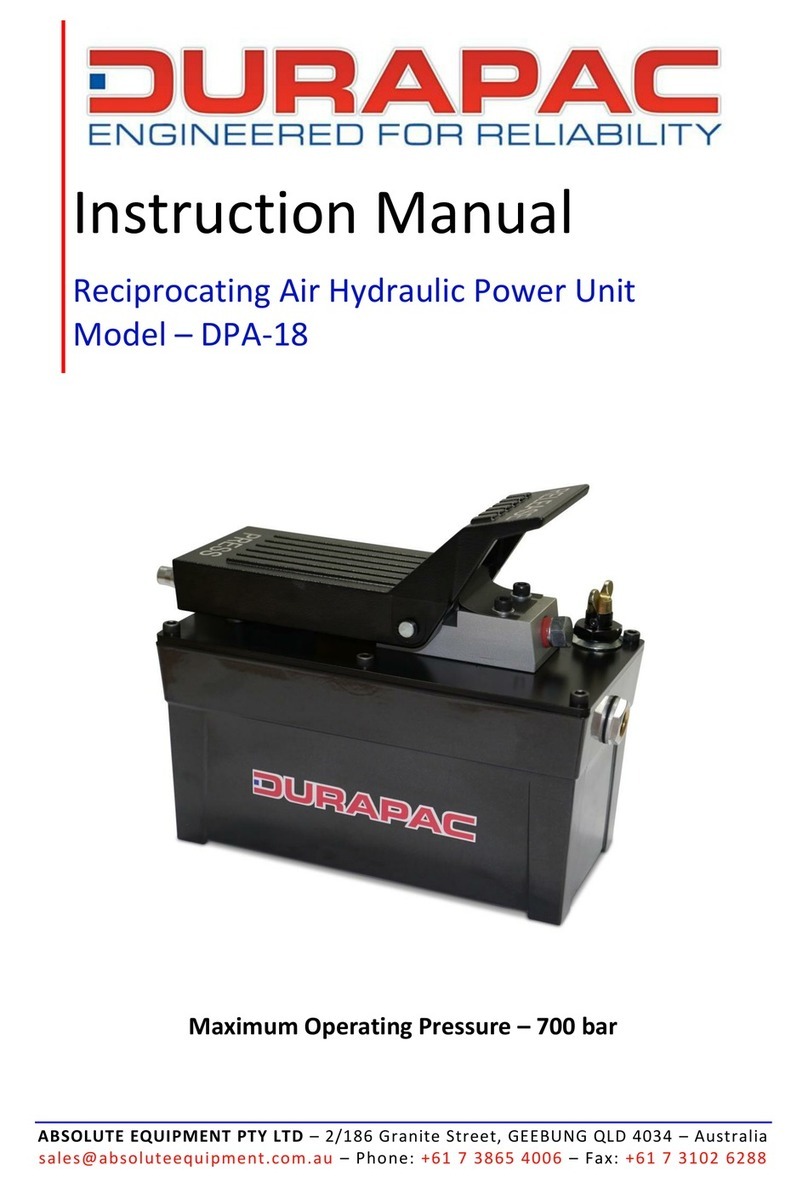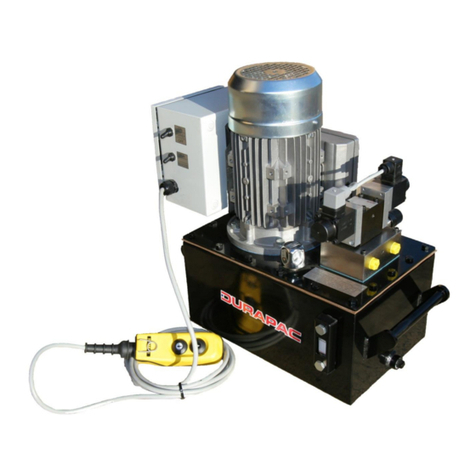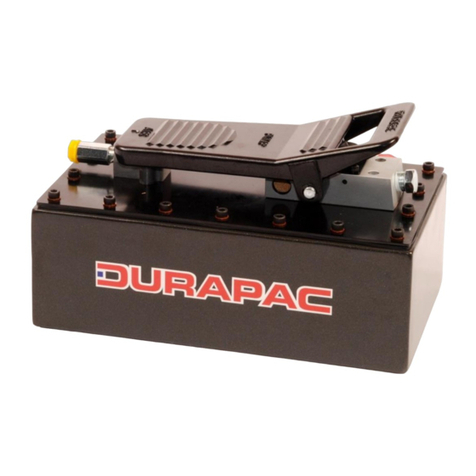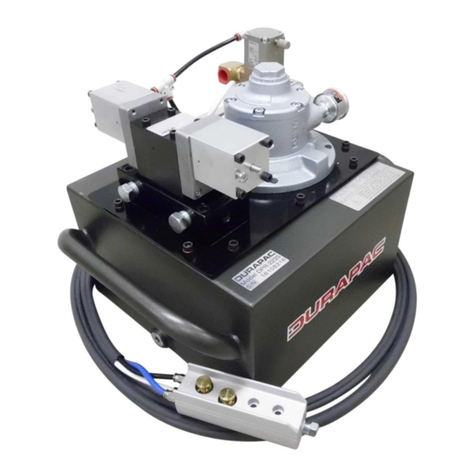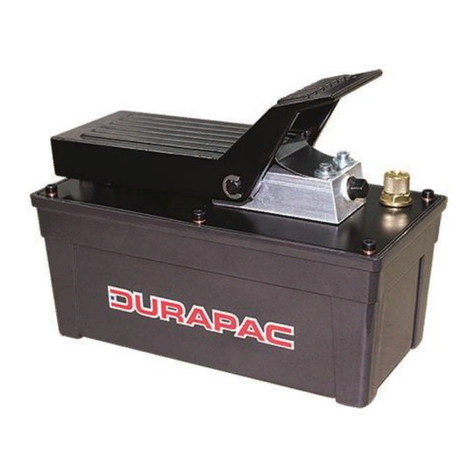
Instruction Manual
SPES3502AR Electric PU - V1.0 www.durapac.com Page 2 of 12
This is a safety alert symbol. It is used to alert you to potential personal injury hazards.
Obey all safety messages that follow this symbol to avoid injury or death
1.0 Product Information
DURAPAC –035 Series Auto 2 Speed Power Units are engineered to meet Industrial Standards for
Performance and Safety. The SPES3502AR model delivers 2.0 Lpm up to 10 bar and 0.2 Lpm up to
700 bar pressure on single acting cylinders and tools. The power unit has an internal ‘pop off’ valve
to indicate full pressure and remote pendant to actuate Advance/Retract functions. The power unit
is driven by a 0.35 kW, 230 Volt, 50/60 Hz single phase electric motor and may be used at any angle
due to the fully enclosed rubber lined reservoir. The power unit is lightweight and easily portable
using the shoulder strap and handle.
Special skill, knowledge and training may be required for a specific task and the product may not be
suitable for all jobs. The user must ultimately make the decision regarding suitability of the product
for any given task and assume the responsibility of safety for all in the work area. Contact a Durapac
representative if you are unsure of your power unit’s suitability for a particular application.
2.0 Receiving Instructions
It is recommended prior to use that an inspection be done by qualified personnel and that any
missing or damaged parts, decals, warning/safety labels or signs are replaced with Durapac
authorised replacement parts only. Any power unit that appears to be damaged in any way, is worn,
leaking or operates abnormally should be removed from service immediately until such time as
repairs can be made. Any power unit that has been or suspected to have been subject to a shock
load should be removed from service immediately until inspected by a Durapac authorised service
centre. Owners and operators of this equipment should be aware that the use and subsequent
repair of this equipment may require specialised training and knowledge.
3.0 Safety
Save these instructions. For your safety, read and understand the information contained within. The
owner and operator should have an understanding of this product and safe operating procedures
before attempting to use this product. Instructions and safety information should be conveyed in the
operator's native language before use of this product is authorised. Make certain that the operator
thoroughly understands the inherent dangers associated with the use and misuse of the product. If
any doubt exists as to the safe and proper use of this product as outlined in this factory authorised
manual, remove from service immediately.
To avoid personal injury keep hands and feet away from work area during operation
Do NOT handle pressurised hoses. Escaping oil under pressure can penetrate the skin
causing serious injury. If oil is injected under the skin, see a doctor immediately
Stay clear of loads supported by hydraulics. A cylinder, when used as a load lifting
device, should never be used as a load holding device. After the load has been raised
or lowered, it must always be supported mechanically
